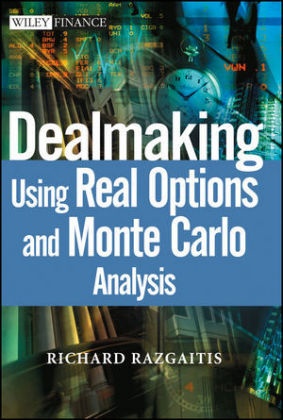Ulteriori informazioni
Informationen zum Autor RICHARD RAZGAITIS is a managing director at InteCap, Inc. A recognized leader in the field of licensing and valuation, he has over twenty-five years of experience working with the development, commercialization, and strategic management of technology, seventeen of which have involved the commercialization of intellectual property. Klappentext Applying practical tools to the volatile process of negotiatingPrognosticators apply Monte Carlo Analysis (MCA) to determine the likelihood and significance of a complete range of future outcomes; Real Options Analysis (ROA) can then be employed to develop pricing structures, or options, for such outcomes. Richard Razgaitis' Dealmaking shows readers how to apply these powerful valuation tools to a variety of business processes, such as pricing, negotiating, or living with a "deal," be it a technology license, and R&D partnership, or an outright sales agreement. Dealmaking distinguishes itself from other negotiating guides not only by treating negotiations as an increasingly common situation, but also by presenting a tool-based approach that creates flexible, practical valuation models. This forward-thinking guide includes a variety of checklists, case studies, and a CD-ROM with the appropriate software.Richard Razgaitis (Bloomsbury, NJ) is a Managing Director at InteCap, Inc. He has over twenty-five years of experience working with the development, commercialization, and strategic management of technology, seventeen of which have been spent in the commercialization of intellectual property. Zusammenfassung Applying practical tools to the volatile process of negotiating Prognosticators apply Monte Carlo Analysis (MCA) to determine the likelihood and significance of a complete range of future outcomes; Real Options Analysis (ROA) can then be employed to develop pricing structures, or options, for such outcomes. Inhaltsverzeichnis Chapter 1 Introduction 1 Why Another Negotiating Book? 1 Dealmaking(TM) 3 High Significance, High Ambiguity Contexts 4 The "So What?" Question 8 Valuation, Pricing, and Negotiation 8 Tangible and Intangible Content/Value and the New Economy 9 The I Dealmaking Process 10 Organization of the Book 13 Chapter 2 Negotiation People, Language, and Frameworks 15 Negotiation People 15 A Quest 21 The Nut, the Number, the Bogie, and the Toe Tag 23 Quantification, Rationality, and Hyperrationality 24 Chapter 3 The Box and the Wheelbarrow: What Am I Selling (or Buying)? 31 The Box 31 The Wheelbarrow 36 Dealmaking's Spine 41 The Term Sheet 42 Methods and Tools 42 Chapter 4 Discounted Cash Flow Analysis and Introduction to Monte Carlo Modeling 45 Discounted Cash Flow Analysis 45 Scenario (DCF) Analysis 50 Monte Carlo Method: An Introduction 64 Closure and Application to Negotiation 72 Chapter 5 Monte Carlo Method 77 A Model Cash Flow Template 78 Income and Cash Flow Statements: 3M Example 79 Monte Carlo Assumption Tools 91 Uniform Distribution: Highest Uncertainty Between Certain Bounds 91 Triangular Distribution 94 The Normal Distribution 97 Other Distribution Functions 100 Monte Carlo Model of the DCF Template 102 Combined CAGR and Cost Ratio Uncertainty Distributions 102 Correlating Assumptions 105 Additional Assumption Distributions 107 Twentieth (and Other) Percentile Valuations 108 Comparison of Monte Carlo Results with DCF (RAHR) Method 114 Scenario Modeling in Monte Carlo 115 Monte Carlo Tools for Determining Variable Significance 120 Final Points on the Monte Carlo Model 121 Appendix 5A: Crystal Ball Report Corresponding to the Results Presented ...

